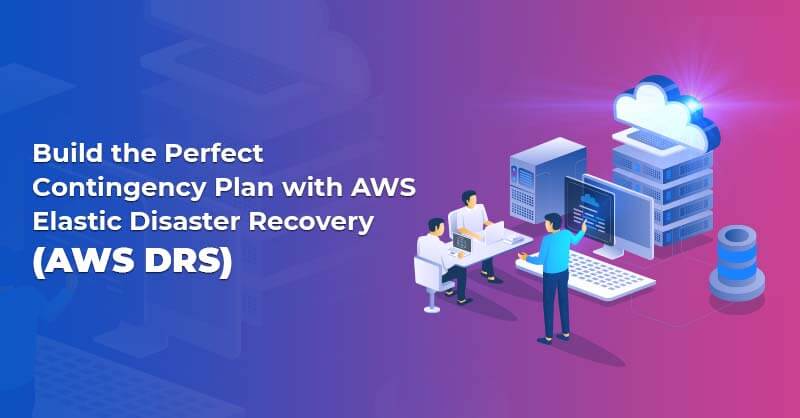Managing Microservices with Anthos Service Mesh
Written by Danish Suhail
Cloud EngineerThe process of application development is that calls for innovation and perfection. The main obstacle to this is the repetitive tasks that developers must engage in often at the expense of testing the application and removing bugs. This problem persists at multiple levels: from developing a simple HTML webpage to an automated cluster on Kubernetes. With services like Anthos Service Mesh, easily accessible on Google Kubernetes Engine (GKE), developers can automate crucial but repetitive tasks and focus on writing the code for their application.
Service Mesh has the features and tools necessary to create a reliable network between services that allows your application to function smoothly with microservices architecture.
What are Microservices?
To understand what Anthos Service Mesh is, we need to define a microservices approach and why companies should opt for that approach.
A microservices architecture approach involves breaking down application services into smaller services. At first, there were only monolithic applications, wherein the entire application was confined to a single codebase. It had its fair share of advantages, like being easy to develop and deploy. Still, it had its caveats, including being difficult to manage, having scalability constraints, and needing to redeploy the entire application for a minor change.
Each service had its dedicated task with the microservices approach, thus solving the monolith application’s problems and adding other advantages like increased performance and agility. To learn more about how you can leverage microservices architecture with Google Cloud, read our blog on the subject.
When microservices became a norm in the industry, new challenges started to appear, such as authenticating requests between services which was a significant security concern, and traffic management between services networks. To solve this problem, there were two solutions: either add certificates or retry logics manually, which is a tedious task, or create services that can do these things for us. Of course, people mostly prefer the second option, and thus Service Mesh was created. Service Mesh could solve these issues and provide telemetry, among other tools.
Containerization and Management
Containerization is the crucial process for effectively developing the microservices approach. So, what exactly is a container, and how does it help with creating a microservices architecture?
A container contains OS, libraries, dependencies, and the code to create a simple “executable” file that can be executed on specific software, the most common of which is Docker. The advantage of containerizing an application is that most microservices are made of different programming languages and frameworks, which can cause challenges such as conflict within framework versions used by various microservices. By containerizing such services, we can ensure independence between multiple microservices.
Besides, independent containerization offers better management and scalability because of a service known as Kubernetes. Kubernetes is an open-source orchestration tool primarily developed with scalability and availability in mind, which allows the containers to be scaled and automatically provisioned across different nodes in a cluster to ensure high availability. But with the help of the community, Kubernetes has surpassed its primary goals, and its capabilities have exceeded industry standards.
Istio: The Ideal Service Mesh Solution
Istio is a potent and popular Service Mesh, backed by the open-source community, designed to manage, connect, and services security. Istio brings vital features to the table, including:
- Provide services security that is communicating with each other by providing TLS Communication
- Implementing identity-based authentication and authorization
- Implementing routing rules, retries, failovers, and fault injections
- Providing centralized visibility
- Providing telemetry between services
Anthos Service Mesh: The Perfect Extension to Istio
With Istio, the developers at Google Cloud took the initiative to develop Anthos Service Mesh, powered by Istio, that possesses all the capabilities of Istio. It consists of a data plane and additional control planes such as Google Managed Control Plane and in-cluster control plane. With the help of network proxies, traffic between services can be logged and monitored. Furthermore, in recognition of the need for efficient traffic management, Google Cloud has developed a special Traffic Director, a managed traffic control plane for service mesh.
The in-cluster control plane helps manage the nodes and pods within the cluster and allows developers to add optional features like trace users with custom ids and enable an internal load balancer. It also has additional features, including reliability and support by Google Cloud Platform, which provides Service Mesh services to GKE and on-prem Kubernetes clusters.
With Anthos Service Mesh, you can enjoy the following features:
- Automatically ingest the Metrics and Logs generated by the GKE cluster to Google Cloud.
- Have access to preconfigured dashboards that increase visibility across multiple workloads.
- It provides in-depth telemetry that helps you understand the automated communication process from various services, which can help in improving customer experience
- Specify Service Level Objectives (SLO) alerts that can help you resolve issues in any unforeseen contingencies.
For understanding the capabilities of Anthos Service Mesh, a link to Qwiklabs is provided below, which would guide you through installing and configuring Anthos Service Mesh with the help of Google Managed Control Plane, Google Cloud Console, and GKE. In addition, there is a quick demo on how Anthos Service Mesh could be used to manage microservices architecture.
Installing Anthos Service Mesh on Google Kubernetes Engine | Qwiklabs
Last but not least, given Google Cloud’s commitment to building open solutions, Anthos Service Mesh can operate across both your Google Cloud and on-prem environments.
In conclusion
Anthos Service Mesh is a powerful tool built ground up for microservices that is a perfect example of the phrase “Work Smarter, Not Harder.” It’s designed to enable developers to focus on writing the code while it helps monitor traffic and services operating within the microservices architecture. Due to its various use cases, multiple companies quickly adopt it to give them an edge against the competition in this ever-changing landscape. In addition, with mTLS (Mutual Transport Layer Security), developers can ensure service-to-service and end user-to-service communications are secure.
When it comes to leveraging microservices to take your applications to the next level, the help of a certified expert team is essential. As partners of Google Cloud, we believe that we can help. Read our case study to discover how we implemented microservices architecture and helped an online clothing retailer bolster customer engagement on their website.
To learn more about us, connect with us at [email protected] or visit us at www.royalcyber.com.



